Contents
The ide is another representative of the carp family, which lives more in rivers with decent depths and moderate currents, occasionally it can be found in lakes that flow into rivers. Catching an ide is different from catching the rest of its relatives, they consider it an omnivore, therefore there are several methods of catching.
Ide habits
Outwardly, the ide is very similar to the roach, inexperienced anglers often confuse the roach with its large individuals. However, this representative of the carp family grows to a decent size, and gains weight quite well.
The peak of activity falls in the spring months and autumn, but even in summer the fish often come out of the depths to feast on insects that have fallen into the water. Spawning maturation occurs at 4-5 years of age, spawning begins at a water temperature of +6 Celsius, this representative of the aquatic fauna chooses spawning grounds not far from their permanent place of residence.
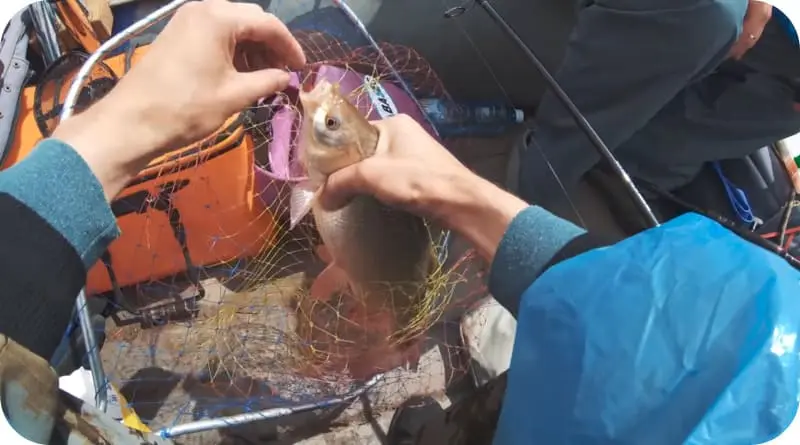
In the first half of life, the ide diet consists of small crustaceans and larvae, algae. As he grows older, he changes his gastronomic preferences, switches to leeches, worms and mollusks, and can even eat his own fry.
In winter, activity drops sharply, the ide goes to rest in the depths and spends almost the entire winter there with minimal mobility.
Finding a catchy place
The ide is quite picky, although its habitat is very impressive. He considers deep and flowing large reservoirs most suitable for life, but without a strong current. In each of the seasons, the place of residence may change slightly, the most promising for open water are:
- exits from deep holes;
- whirlpools and whirlpools;
- places behind the rifts, where the currents are always weaker;
- steep banks with trees hanging over them;
- points with a swirling current;
- bridge supports, other hydraulic structures and their elements;
- clay uneven bottom.
The ide hibernates also at depth, the pits on the main channel are perfect for this.
Features of seasonal fishing
The ide does not differ in constant biting throughout the year, each season has its own characteristics.
Summer
Most of the time the ide spends at depth, in the early morning and before dusk it rises to the upper layers of the water in search of food. In summer, on the surface, it eats insects and their larvae that have fallen on the water surface, and therefore it is worth catching it during this period from the upper layers. The best places are areas with overhanging trees and bushes.
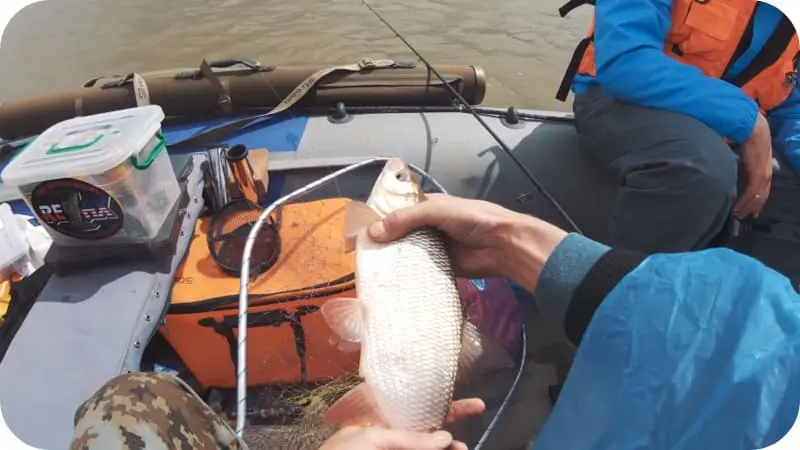
Autumn
Like all representatives of cyprinids, the ide in autumn is almost all the time at the bottom. There he scours in search of food before wintering, he will perfectly respond to the hooks located there with baits of plant origin. It often responds to artificial baits in the form of flies and micro-oscillators.
Winter
Catching is possible only at depths, ice fishing is possible with various types of baits, both vegetable and animal. Feeding the place is a must. It often responds to artificial options in the form of vertical spinners without replanting additional bait. The bite is usually weak during this period of the year, but some manage to bring out real trophies with the correct supply of the bait and its play in the water column.
Spring
The best season for catching ide, he is one of the first to spawn, and then actively scours the shallows with warm water in search of food. Often missing everything in a row without much care.
With the right selection of bait, you can get an ide in any of the seasons, the main thing is to take this seriously.
Tooling
Ide fishing is carried out by different methods, depending on the season, the fish will respond differently to the same tackle. To get the trophy will help:
- spinning;
- feeder;
- fly fishing;
- float gear.;
- Donka.
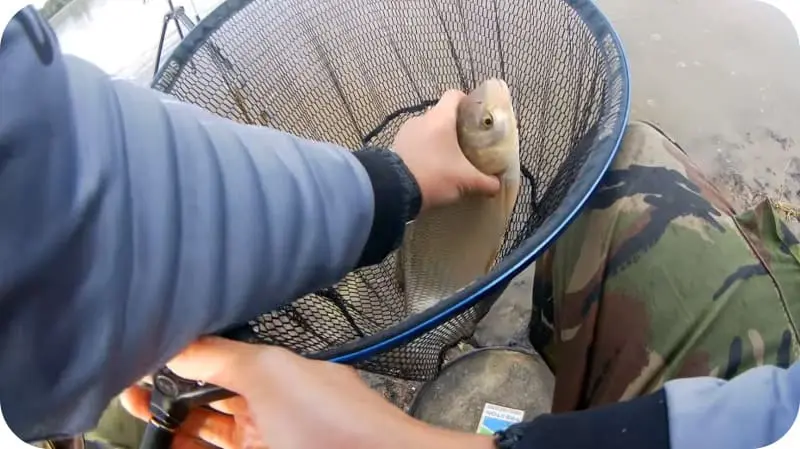
For each of the species, the tackle is formed individually, while taking into account the place of fishing and the time of year. In addition to the different components, there are common characteristics:
- as a basis for any equipment, it is better to take a monofilament fishing line, a small percentage of ductility of which will become an excellent shock absorber when removing the catch;
- leashes are placed on all snaps, and in the spring they choose the minimum thickness, and from the beginning of summer the thickness gradually increases;
- hooks use a variety, choose good quality with excellent sharpening from a trusted manufacturer;
- blanks for each type of fishing will vary, but choose options from carbon or composite, they are stronger and lighter;
- coils are put on almost all types, but they use different options depending on the gear.
We will consider the collection of this or that gear in more detail below.
You can also catch on a braided line, in this case, a shock leader or feeder gamma is placed in front of the leash as a shock absorber.
Bait
To hold in one place and fish from a certain point, various bait is used for the ide. The easiest way is to go to the store and buy a ready-made universal mixture for peaceful fish species. However, it may not always work, and not everywhere.
The best option would be cooked by hand for which they use:
- sunflower cake;
- boiled porridge;
- flavors.
They are mixed in certain proportions and thrown to the chosen point for catching. There are other food options as well.
Peas
Peas are considered the best option for feeding, but you need to be able to cook it. Fishermen with experience recommend steaming this product, it turns out to be moderately soft and fragrant, additional flavors are not used in this case. Peas will work perfectly in summer and until mid-autumn, in winter and in spring, the ide can refuse this vegetable delicacy.
Bait and tackle
In cool water, in early spring and late autumn, this representative of cyprinids may not react at all to vegetable types of bait and bait. What then to interest the ide? What to offer as an alternative?
Spoon
Fishing from ice and before freeze-up will be great with spinners. Real giants often respond to this type of bait in different water areas.
In winter, fishing is carried out on sheer options such as “carnations”, and at the end of autumn, small-sized spoons and medium turntables with lurex will be an excellent option. The leash must be set at any time of the year, this will save the base when hooked.
Wobbler
An omnivorous ide is also caught on a wobbler, natural colors with a decent depth are chosen for this. The bait will work best in late autumn, just before freezing.
Technique of fishing
There are several successful ways to capture, but without basic knowledge of each of them, success will not be achieved.
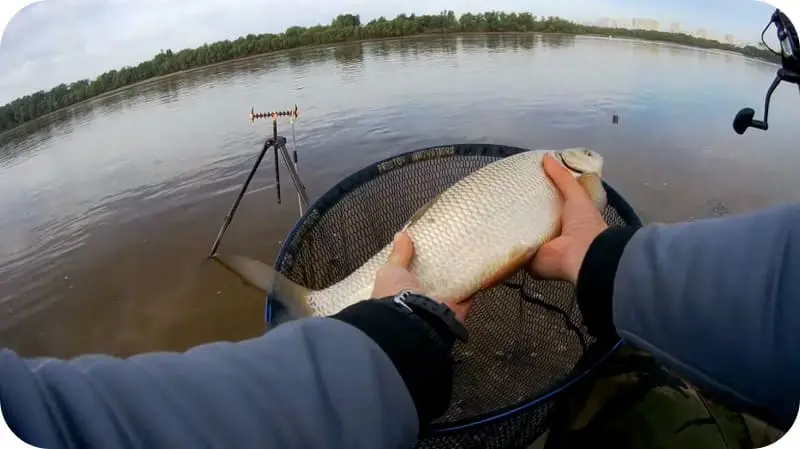
Floating rod
You can catch an ide on a float both from the coastline and from a boat, it is the second option that usually gives more efficiency. Having anchored the boat on the border of vegetation and clear water, they throw tackle. The bait is carried out along the grass, while the longer the blank, the greater the chance of a catch.
Feeder
Apply from early summer to mid-autumn. Feeders are used in small size and sliding type. Stuffed with pre-prepared bait or steamed peas. The beginning is characterized by feeding the place, for this they throw tackle with a large amount of food at the selected point 4-6 times. Further, a baited hook is fed to this place and the voles are waiting.
Spinning
Spinning tackle is relevant from early spring, it is actively used at the end of summer and until the very freeze-up. Depending on the bait, the wiring may vary:
- for wobblers, stop and go is more suitable;
- small turntables work better on stepped;
- micro-vibrators are more attractive on a uniform one.
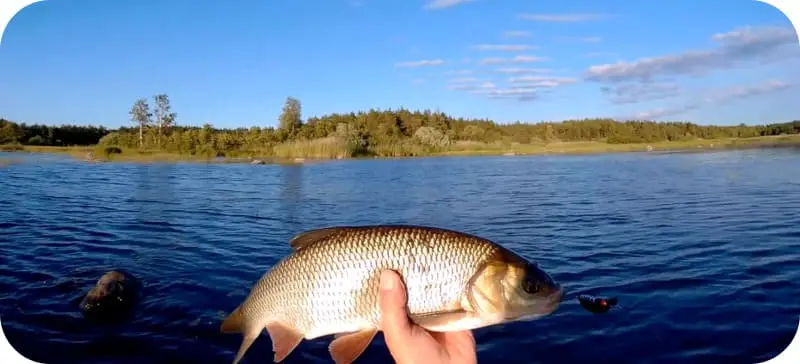
Places with decent depths are usually caught, but in the spring you can also look for ide in the shallows, but only after spawning.
fly fishing
Fly fishing is less common, but often this is how trophy specimens are obtained. There are no special difficulties in the fishing technique, it is enough to throw the chosen bait into a promising place and lead it to the coastline or to the boat.
Donka
Donka will help to cover a large area, which will increase the chances of success. Both vegetable and animal variants are used as bait. Before casting the gear, it is worth feeding the place, then the food is periodically added manually.
Mormyshka
Not only does this lure work great when fishing from the ice, fishing from a boat on a side nod often brings the desired trophy throughout the year. It is obligatory to feed the fishing place, then they throw the tackle and play with the bait in the water column, closer to the bottom.
Each of the types of capture will bring success, you just have to adapt to the characteristics of each.
Fighting rules
To lure the fish is not enough, for a successful capture, you must be able to spot the trophy and take it out. The playing of river and lake ide is almost the same, but some points still need to be known.
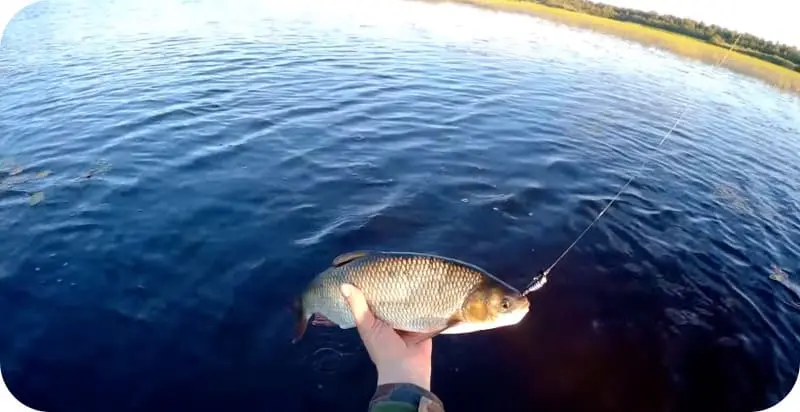
River
The bite of the ide occurs sharply, it is a fairly strong fish. However, it is not necessary to detect the trophy right away, as a rule, initially he tries the proposed delicacy and checks it for safety. After the first blow, a couple of seconds should pass, only after this time a notch is carried out.
It is not worth accelerating the excretion, the ide must be killed. Very soon, he will be exhausted, it will be possible to pull him up to the fisherman’s parking lot without much effort and grab him with the help of a landing net.
Lake
Everything goes according to the above scenario, but the fighting is carried out a little faster. Immediately after the notch, they try to pull the fish as soon as possible to the coastline or boat, where the landing net should already be waiting for it.
If the serif is not carried out with high quality, the ide can easily spit out the hook and go home.
Catching an ide is not always easy, but emotions with a positive outcome of the case more than cover everything else.









